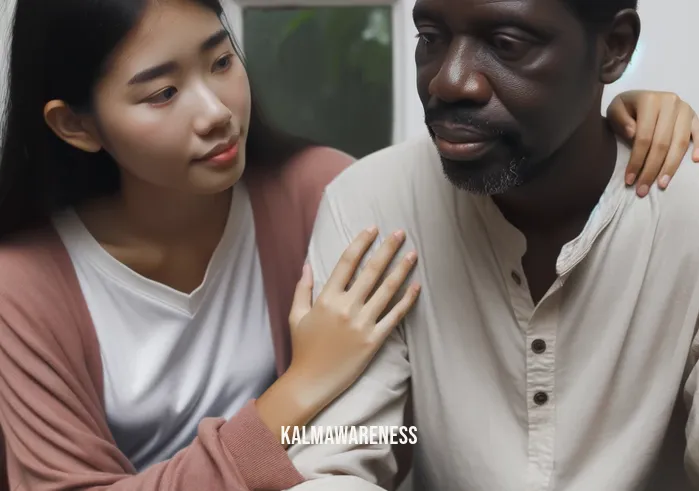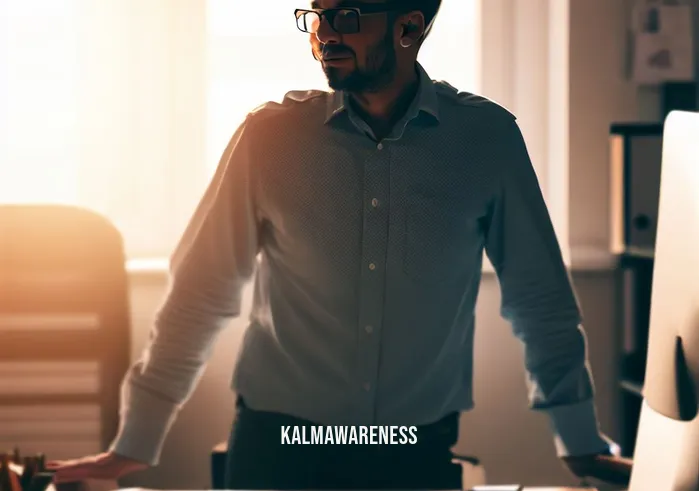When You’re Feeling Sad and Blue: Navigating the Tides of Emotion
Feeling sad and blue is a universal experience, touching the lives of everyone from time to time. It’s a natural response to the ups and downs of life, especially in our fast-paced world where young adults aged 20-40 often find themselves juggling multiple responsibilities and facing constant change.
Understanding Your Emotions
It’s important to recognize that feeling down is a part of the human experience, and acknowledging these feelings is the first step towards managing them. Often, we might feel pressured to maintain a facade of constant positivity, but it’s crucial to remember that it’s okay not to be okay.
“The only way out is through.” – Robert Frost
This quote resonates deeply when you’re feeling sad and blue. It reminds us that confronting and understanding our emotions, rather than avoiding them, is key to moving forward.
Recognizing the Signs
Here are some common signs that you might be feeling down:
- Lack of energy or motivation: Feeling unusually tired or lacking the energy to do things you usually enjoy.
- Changes in appetite or sleep patterns: Either too much or too little of both can be a sign you’re feeling blue.
- Withdrawing from social interactions: Finding yourself avoiding friends or family.
Practical Steps to Manage Sadness
When you’re feeling sad and blue, consider these simple yet effective strategies:
- Exercise: Physical activity can boost your mood by releasing endorphins. Even a short walk can make a difference.
- Mindfulness and Meditation: Practices like mindfulness can help ground you in the present moment, providing a sense of calm. Learn more about mindfulness.
- Journaling: Writing down your thoughts can help you process and understand your emotions better.
It’s also vital to remember the power of self-compassion during these times. Being kind to yourself and acknowledging your feelings without judgment can be incredibly healing. Discover more about self-compassion.
Seeking Support
Sometimes, the support of friends, family, or a professional can be invaluable. Talking about how you’re feeling can provide relief and perspective. Don’t hesitate to reach out if your feelings of sadness persist.
When Professional Help is Needed
If your feelings of sadness are overwhelming and persistent, it might be time to seek professional help. There’s no shame in taking this step; in fact, it’s a brave and positive action towards your well-being.
Wrapping Up
Remember, it’s perfectly normal to have days when you’re feeling sad and blue. Embracing these emotions as a natural part of life, and knowing how to navigate through them, can help you emerge stronger and more resilient.
Stay tuned for the next segment, where we’ll delve deeper into effective strategies for coping with sadness and how to transform these feelings into opportunities for growth and self-discovery. Let’s continue this journey together in Part 2!

Transforming Sadness into Strength: A Deeper Dive
Welcome back! In the first part of our journey, we explored the nature of feeling sad and blue. Now, let’s delve deeper into transforming these feelings into avenues for personal growth and resilience.
The Power of Personal Stories
Everyone has a story about overcoming challenging times. Consider Sarah, a 28-year-old graphic designer. She went through a rough patch when a major project failed. Initially, Sarah felt overwhelmed, but she decided to use this experience as a catalyst for change. By acknowledging her feelings and seeking support, she found new ways to approach her work and personal life, emerging more resilient and confident.
“Turn your wounds into wisdom.” – Oprah Winfrey
This quote encapsulates Sarah’s journey and serves as a reminder that our toughest times can be our greatest teachers.
Strategies for Emotional Growth
Let’s explore some strategies that can help turn feelings of sadness into opportunities for growth:
- Reflect and Learn: Consider what your emotions are teaching you. Is there a change you need to make or a lesson to be learned?
- Seek New Experiences: Trying new things can shift your perspective and lift your mood. Yoga, for example, can be a great way to start.
- Embrace Creativity: Channel your emotions into creative outlets like writing, painting, or music.
Table: Emotion into Action
Here’s a quick guide to transform specific emotions into positive actions:
| Emotion | Action |
|---|---|
| Sadness | Journaling, Art |
| Anxiety | Mindfulness, Exercise |
| Stress | Yoga, Nature Walks |
Sustainable Self-Care
While navigating through sadness, it’s important to maintain a sustainable self-care routine. This involves practices that nourish both your body and mind, such as adequate sleep, healthy eating, and regular physical activity. Learn more about sustainable self-care.
The Role of Community and Connection
Never underestimate the power of community and human connection in healing. Sharing your feelings with trusted friends or support groups can provide comfort and new perspectives.
When to Seek Professional Help
If your feelings of sadness become overwhelming, it’s crucial to seek professional help. A therapist can provide valuable tools and support to help you navigate through your emotions.
Preparing for the Next Step
As we delve further into this topic in the final segment, we’ll explore advanced techniques and insights for not just surviving, but thriving, when you’re feeling sad and blue. We’ll look at how embracing your emotions can lead to profound personal growth and a deeper understanding of yourself.
Stay tuned for the concluding segment, where we’ll tie everything together, offering insights and strategies to help you emerge from sadness with new strength and wisdom.

Embracing Growth: Turning Sadness Into a Source of Strength
In our journey through understanding and managing feelings of sadness, we’ve explored recognizing emotions, practical coping strategies, and transforming these feelings into opportunities for growth. In this final segment, we focus on applying these insights into our daily lives, fostering a resilient and emotionally intelligent mindset.
Applying Insights in Daily Life
Embracing your emotions, especially when you’re feeling sad and blue, can lead to profound personal growth. Here’s how you can apply these insights every day:
- Daily Reflection: Take a few minutes each day to check in with your feelings. Acknowledge them without judgment.
- Mindfulness Practices: Incorporate mindfulness into your routine to stay grounded and present. This can be through meditation, yoga, or simply mindful walking.
- Creative Outlets: Channel your emotions into creative activities like writing, painting, or music. These can be powerful tools for expression and understanding.
Learning from Emotions
Emotions are our internal compass. They guide us towards understanding deeper aspects of ourselves. Ask yourself, “What can this emotion teach me?” This approach can transform a moment of sadness into a learning opportunity.
“Emotions are not problems to be solved. They are signals to be interpreted.” – Vironika Tugaleva
This quote beautifully encapsulates the essence of our journey: Emotions are valuable signals, guiding us towards self-awareness and growth.
Strategies for Long-term Well-being
For sustainable emotional health, consider the following strategies:
- Regular Exercise: Maintain a routine that includes physical activity to help regulate mood and improve overall health.
- Balanced Nutrition: A healthy diet can have a significant impact on your emotional well-being.
- Quality Sleep: Ensure you’re getting enough rest. Sleep meditation can be a helpful tool.
Summarizing Our Journey
Throughout this essay, we’ve explored the multifaceted nature of feeling sad and blue. We’ve looked at recognizing and acknowledging these feelings, practical coping strategies like mindfulness and exercise, and the power of transforming these emotions into pathways for growth and resilience.
Key Takeaways:
- Embracing and understanding your emotions is crucial for emotional growth.
- Implementing practical strategies like mindfulness, exercise, and creativity aids in managing sadness.
- Turning emotions into learning opportunities fosters personal development.
Final Thoughts and Call to Action
As we conclude, take a moment to reflect on how you can apply these insights in your life. How can embracing your emotions lead to personal growth? What new strategies can you try when feeling sad and blue?
We invite you to explore more about emotional well-being and personal growth on our website. Share your experiences and insights in the comments below. Your story could be the guiding light for someone else’s journey.
Remember, your emotions are a powerful tool for self-discovery and growth. Embrace them, learn from them, and let them guide you towards a more resilient and fulfilling life.




